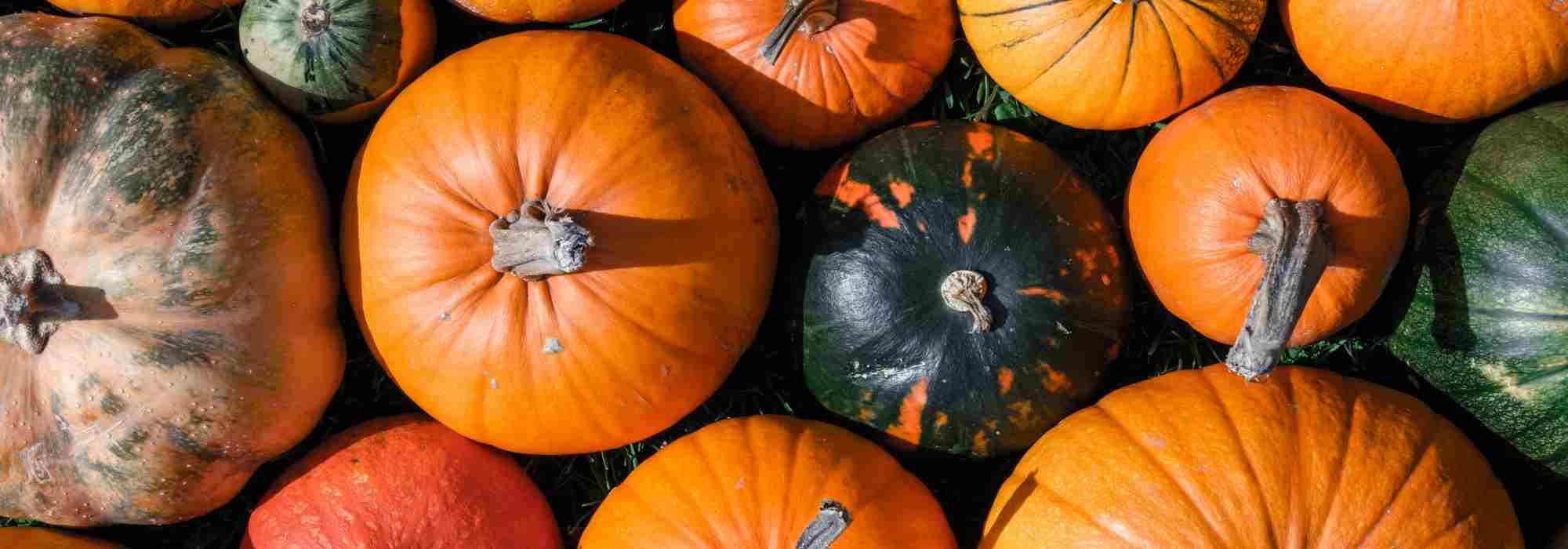
Pumpkin: planting, sowing, growing
Contents
Pumpkin in a nutshell
- Pumpkin is an essential vegetable in the iconic autumn garden
- Bright Red of Étampes, Yellow of Paris, there are many species and varieties, from giant pumpkin to potimarron
- With its deliciously sweet flesh, it lends itself to numerous savoury or sweet recipes
- It is a climbing vegetable plant, so ensure you have enough space for planting
- It is easy to grow in the sun, in rich, deep, and cool soil
A word from our expert
‘Vivid Red of Étampes’, ‘Yellow of Paris’, ‘Blue of Hungary’, ‘Red Kuri’, pumpkins (Cucurbita maxima) offer us an astonishing variability of shapes, colours, and sizes. From the large orange pumpkin ‘Jack O’ Lantern‘ so emblematic of autumn, to the Turkish hat-shaped pumpkin, passing through the Olive Green Pumpkin, and the gigantic Atlantic Giant Pumpkin or Gargantua Pumpkin, this vegetable from the large family of squashes shows us all sorts of colours and shapes!
Beneath their often tough skin—orange, green, yellow, blue, smooth, ribbed, warty, or even scabby—lies a deliciously sweet orange flesh, perfect for preparing tasty recipes. It can be used in a thousand and one ways, particularly in soups, gratins, soufflés, fritters, pies, purées, and veloutés.
Growing pumpkins is very simple, even for beginner gardeners. A few prunings are simply necessary to ensure good fruiting. They thrive in full sun in rich, humus-rich soil that remains cool in summer. Sowing is done in April, in pots indoors, or directly in the ground in May, after the frosts. The plants are then planted in the garden after mid-May.
With their powerful, dentate leaves and their often very large, colourful fruits, they are among the most decorative vegetables in the vegetable garden!
We invite you to discover the most beautiful varieties of pumpkins in the form of seeds or plants!
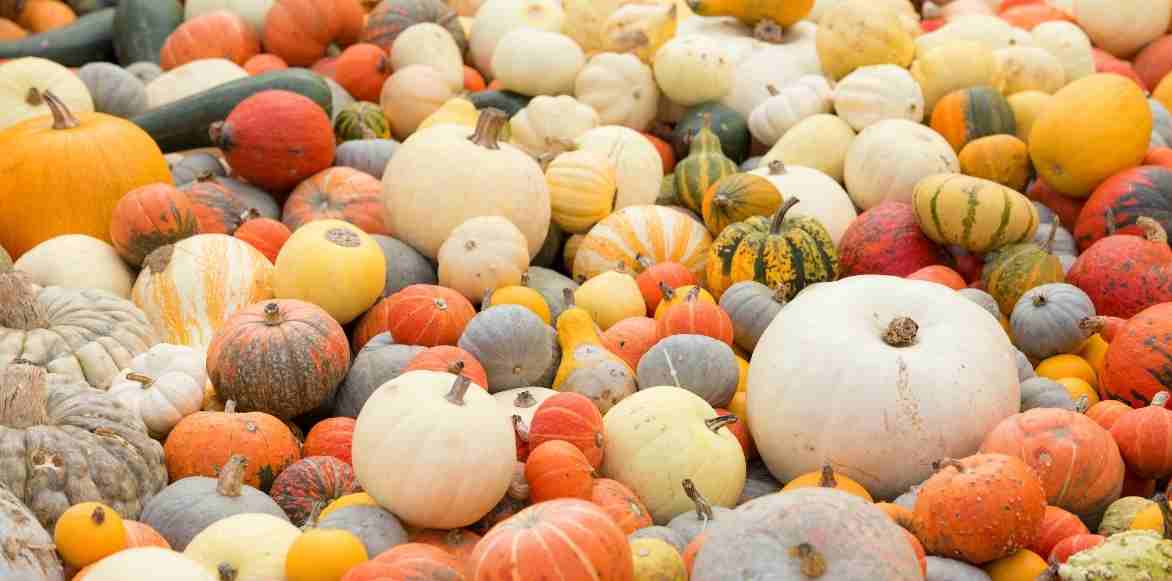
Description and botany
Botanical data
- Latin name Cucurbita maxima
- Family Cucurbitaceae
- Common name Pumpkin
- Flowering June to August
- Height 0.15 m
- Exposure Sun
- Soil type rich and light
- Hardiness frost-sensitive
Pumpkin (Cucurbita maxima) is an annual vegetable plant from the large family of Cucurbitaceae, which includes melons, cucumbers, and watermelons. Native to South America, from Argentina to Uruguay, passing through Bolivia and Chile, it was introduced to Europe around the 16th century, like all other species of squash. It is cultivated for its large fruits, which vary in appearance due to numerous hybridizations. They differ in shape (spherical, elongated, bumpy, pear-shaped, or “Turkish hat” …), weight (from less than 1 kg to over 200 kg), colour at ripeness (orange, green, red, yellow, black, white, or even grey-blue), and the texture of their epidermis (smooth, ribbed, verrucate, warty…).
The genus comprises about thirty species. The term “pumpkin” is a generic term that encompasses all cultivated varieties of the genus Cucurbita maxima. In common language, winter squash refers to all types of pumpkins, potimarrons, and so on, with tough skin and delicately sweet flesh. Summer squashes refer to courgettes and various varieties that are harvested while still young when the skin is still tender. The pumpkin is often confused with the squash, which is a round, orange squash but belongs to a different species: Cucurbita pepo.
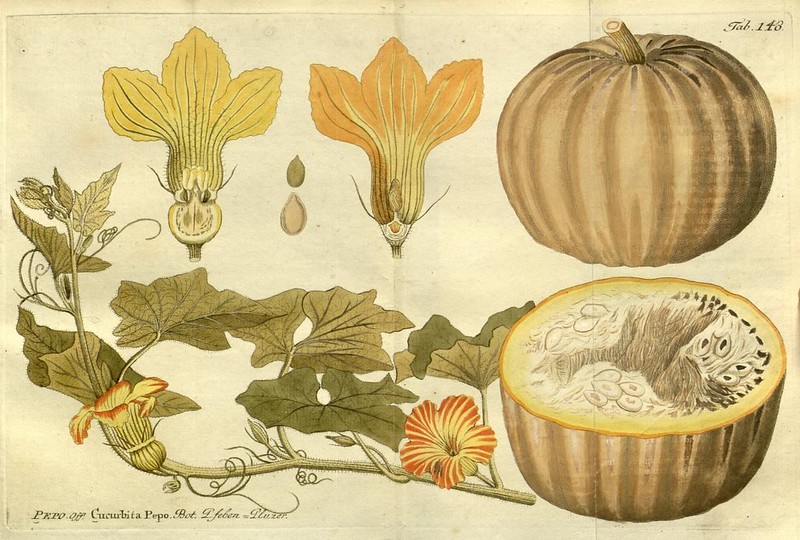
Pumpkin, botanical plate (1822)
Within the family of Cucurbita maxima, we mainly distinguish varieties with large fruits, as suggested by the species name:
- Traditional pumpkins of spherical shape, more or less flattened
- Hubbard pumpkins of oval shape
- Giraumon pumpkins in the shape of a Turkish hat or “monkey bottom”, producing fruits shaped like a hemispherical cap, whole or divided into three or six lobes topped with a more or less coiled turban
- Potimarrons produce smaller fruits, weighing 2 to 5 kg, pear-shaped or spinning top-shaped, with a reddish-orange colour and such thin and tender skin that they do not need to be peeled
The pumpkin is a herbaceous plant known as “running”, meaning it produces long creeping stems on the ground that can reach up to 10 metres in length. They can also climb by attaching themselves to any support using their tendrils. They are equipped with large green leaves, entire, borne on long petioles. They measure 6 to 20 cm long and up to 30 cm wide, are heart-shaped, and divided into five rounded lobes. Their lamina is finely dentate.
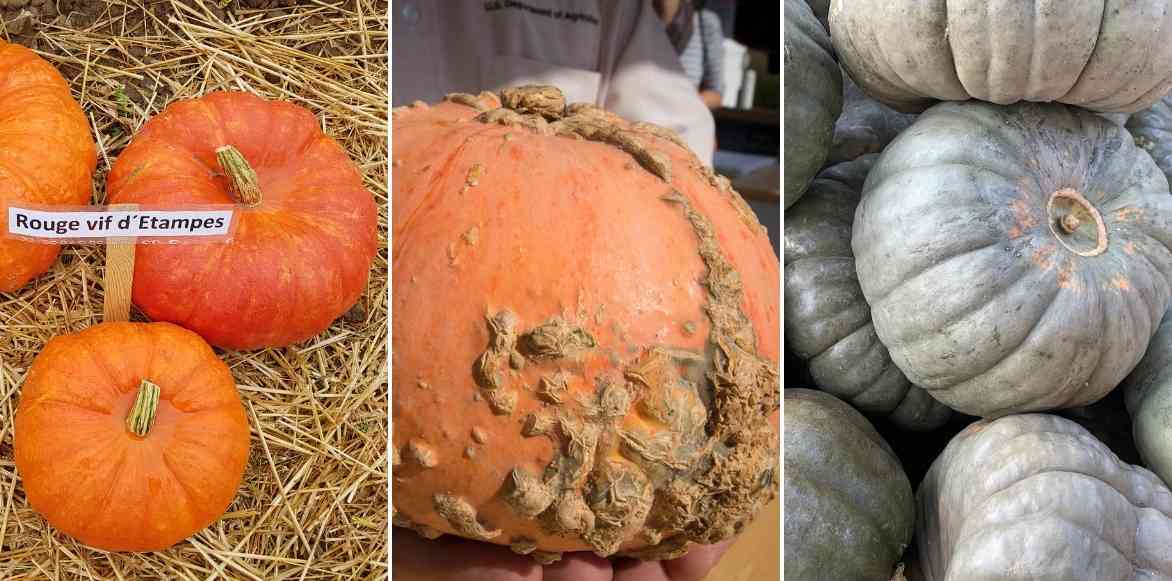 Pumpkin ‘Rouge Vif d’Etampes’, pumpkin ‘Galeux d’Eysines’, Pumpkin ‘Bleu de Hongrie'[/caption>
Pumpkin ‘Rouge Vif d’Etampes’, pumpkin ‘Galeux d’Eysines’, Pumpkin ‘Bleu de Hongrie'[/caption>
Flowers emerge at the axil of the leaves. They are relatively large, measuring 8 to 10 cm, yellow to orange, and campanulate in shape. They contain prominent stamens. The pumpkin, like all squashes, is a monoecious plant, meaning it bears both male and female flowers on the same plant. Male flowers appear first, and once they have faded, female flowers bloom. Female flowers can be distinguished from male flowers by their ovary, a small yellow pumpkin located beneath the calyx.
Female flowers bear the fruits, while male flowers produce the pollen.
The fruit of Cucurbita maxima is a berry that ripens in autumn. One can appreciate the astonishing variability in shapes, colours, and sizes, from the large ribbed bright orange fruit, like ‘Rouge vif d’Étampes’ and the ‘Jack O’Lantern’ pumpkins with oblong shapes, pear-shaped or “Turkish hat” forms of Giraumon pumpkins ‘Turban’, not to mention the curious ‘Galeux d’Eysines’ pumpkins adorned with corky galls. The skin of some varieties is sometimes variegated with red, yellow, green, and white.
The fruit is attached to the stem by a large round and spongy peduncle. Each plant produces 1 to 5 large fruits. The flesh is firm, fine or thick, dark yellow to light orange, sometimes green, sweet, and tasty. It contains white or yellowish seeds, oval, slightly bulging, measuring 2 to 2.5 cm long.
Read also
Sowing of squashes and courgettesMain varieties
The variety selection is vast and original. Check out our wide range in-store to discover more!
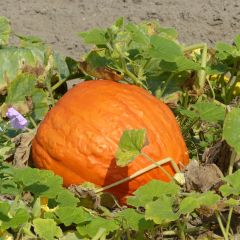
Pumpkin Atlantic Giant - Giant Squash - Cucurbita maxima
- Flowering time July to October
- Height at maturity 60 cm
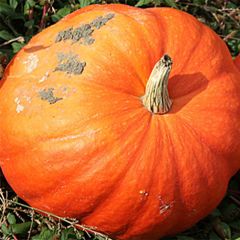
Halloween Pumpkin Jack O'Lantern - Cucurbita pepo
- Flowering time June to August
- Height at maturity 50 cm
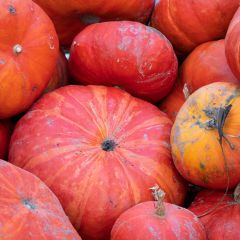
Pumpkin Rouge Vif d'Etampes - Cucurbita maxima
- Flowering time July to October
- Height at maturity 40 cm
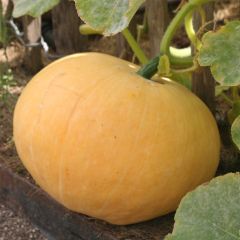
Pumpkin Jaune Gros de Paris (untreated) - Ferme de Sainte Marthe seeds - Cucurbita maxima
- Flowering time July to October
- Height at maturity 40 cm
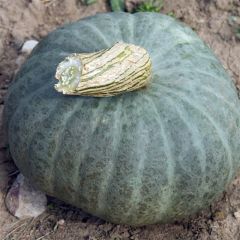
Squash Blue Kuri - Ferme de Sainte Marthe Seeds
- Flowering time July to October
- Height at maturity 30 cm
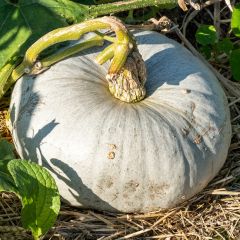
Pumpkin Hungarian Blue - Ferme de Sainte Marthe Seeds
- Flowering time July to October
- Height at maturity 30 cm
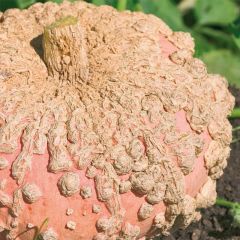
Pumpkin Galeux d'Eysines - Cucurbita maxima
- Flowering time July to October
- Height at maturity 30 cm
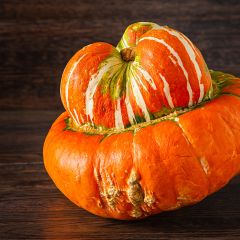
Turban Squash Giraumon - Cucurbita maxima
- Flowering time July to October
- Height at maturity 40 cm
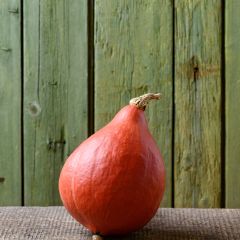
Red Kabocha Squash - Uchiki Kuri
- Flowering time July to October
- Height at maturity 40 cm
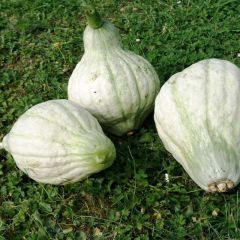
Squash Large Blue Hubbard - Cucurbita maxima
- Flowering time June to August
- Height at maturity 50 cm
Discover other Pumpkins
View all →Available in 0 sizes
Available in 1 sizes
Available in 1 sizes
Available in 1 sizes
Available in 1 sizes
Available in 1 sizes
Available in 1 sizes
Available in 1 sizes
Available in 1 sizes
Available in 1 sizes
Sowing pumpkin
Count approximately 6 months between sowing and harvest.
When and how to sow?
Sowing under cover
Sowing can be done in pots indoors from March, with transplanting after all risk of frost has passed.
- Sow 2 or 3 pumpkin seeds per pot filled with potting soil and compost at a depth of about 2 cm and cover with soil,
- Water lightly
- Keep warm and in light, at a temperature of about 16-30 °C
- Maintain the substrate moist but not waterlogged until germination, which usually takes between 3 and 5 days
- Thin out to keep only the strongest seedlings
- When they have 3 or 4 leaves, transplant the plants outdoors after mid-May, once all risk of frost has passed, in holes 20 to 30 cm deep previously filled with compost or manure
- Water and mulch
Sowing outdoors
Loosen the soil well before sowing. Pumpkin seeds should be sown in warmed soil.
- In place, from mid-May, after frosts, sow 3 seeds in clusters filled with compost
- Water lightly to avoid displacing the seeds
- Keep the soil moist until germination
- When the plants are well developed, thin out, keeping only the best plants: leave about 2 metres in all directions around each plant
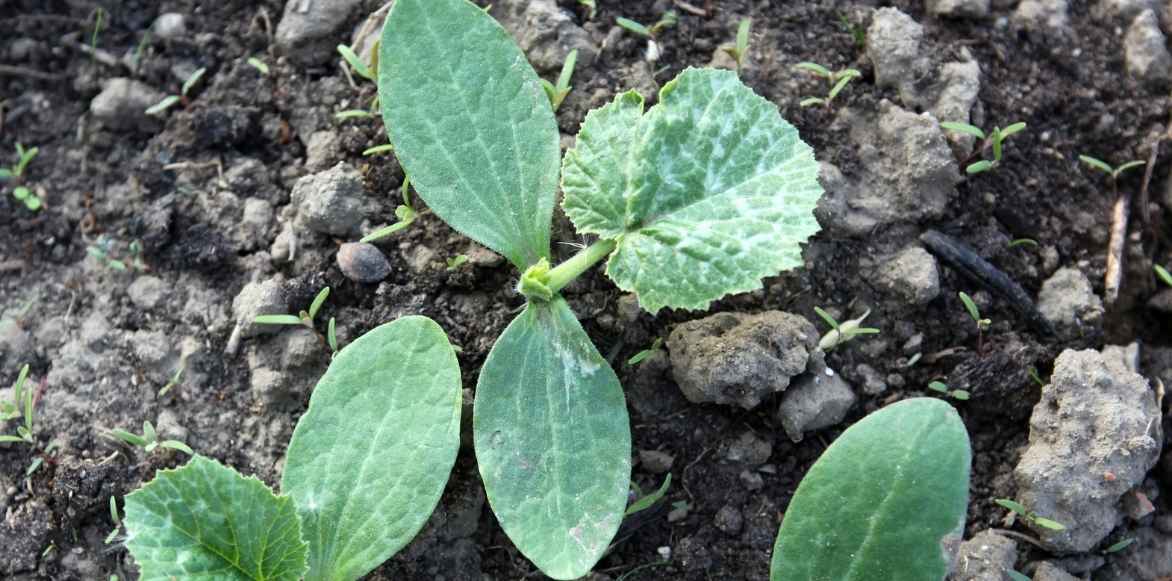
Read also
Powdery mildew or white diseasePlanting Pumpkins
Where to plant it?
Not hardy, the pumpkin is a vegetable grown as an annual. It requires warmth and should be planted in full sun. It thrives in deep, humus-rich soil that retains sufficient water. It naturally finds its place in a vegetable garden where it will need plenty of space; reserve at least 1 square metre for it. To save space and protect your fruits from rot, you can also grow it on supports (trellises, sturdy frames). It is among the most decorative vegetables!
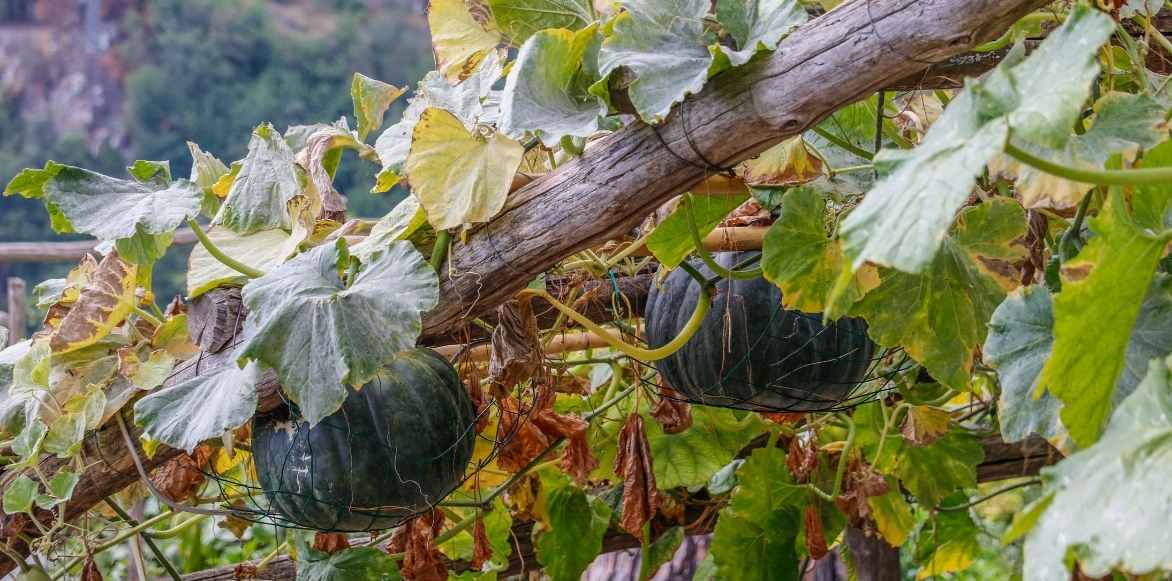 The pumpkin is also very decorative when suspended from trellises
The pumpkin is also very decorative when suspended from trellises
When and how to plant it?
Planting takes place from May onwards, preferably after the Ice Saints, especially in the colder regions.
- Dig a hole at least 40 cm in all directions
- Add well-decomposed manure and/or compost to the soil
- Place the root ball and cover it with loose soil
- Firm down and water to keep the soil moist
- Water generously at the base
- Mulch to keep the soil cool in summer
Growing, care and associations
Pumpkins grow quickly in rich, slightly cool soil. They require plenty of water from sowing or planting; water generously and then regularly during fruit formation. Once the fruits are formed, during ripening, limit watering. Mulch around the plants in summer.
These are greedy vegetables that thrive in soil rich in organic matter, loose, deep, and cool. Before planting, they appreciate good fertilisation.
Weed and hoe regularly, especially at the beginning of the growing season. Before harvest, it is advisable to place a tile or brick under the fruits to prevent them from spoiling when in contact with the soil, thus avoiding rot if the soil tends to retain moisture.
Pruning the stems is not obligatory, but it helps promote fruiting and limit overcrowding in varieties with large fruits. Pinch back the exuberant foliage so that the fruits ripen in the sun. From June to September, on the main stem, when it has 4 to 5 leaves, pinch the terminal bud above the 2nd leaf. Then, cut to 2 leaves above each formed fruit, but do not keep all the fruits: as the fruits form, remove the smaller and less vigorous ones. Depending on the varieties and the expected fruit size, keep only 1 to 3 fruits for the larger specimens, 5 to 6 for smaller pumpkins or potimarrons. Remove the branches without fruits to limit the development of vegetation.
Due to its significant growth, it is much more practical to grow pumpkins alone. However, it forms beneficial associations with cabbage, beans, lettuce, corn, or potatoes, chives, onions, and shallots. It develops slowly and will only occupy all the space allocated to it by late summer, allowing for the planting of fast-growing vegetables like salads nearby.
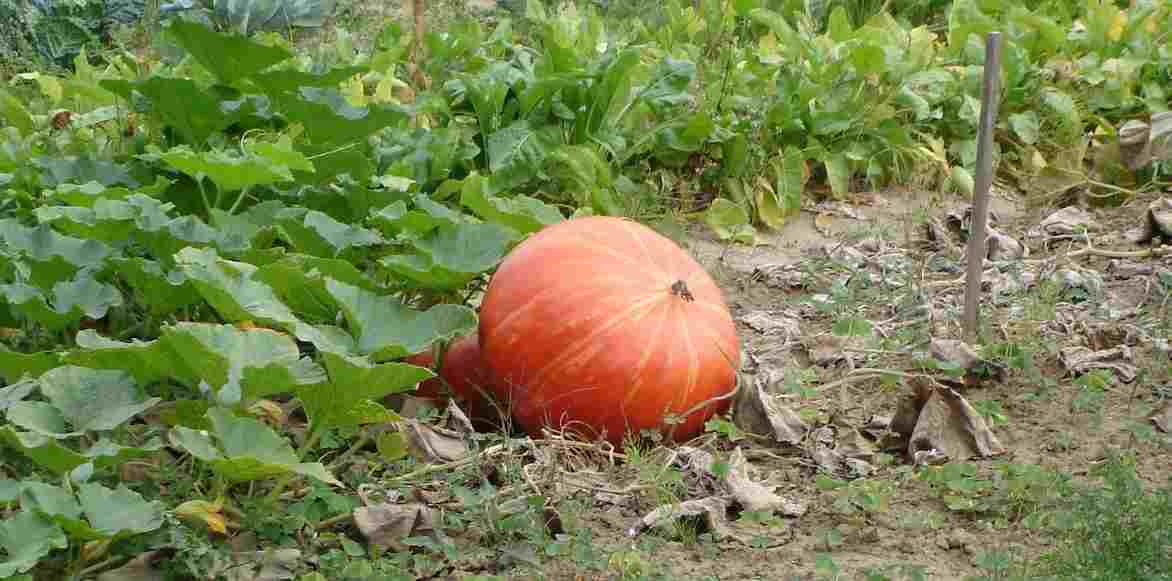
Diseases and pests
Pumpkin has two known enemies:
- Slugs and snails that devour young plants: discover our natural slug solutions and our 7 ways to fight slugs effectively and naturally.
- Powdery mildew, a fungal disease favoured by warm, humid weather, which manifests as white, powdery spots on leaves. It can ultimately affect production. Space the plants well during planting to allow air circulation so that leaves dry quickly in case of rain.
Discover our solutions to prevent and combat powdery mildew in Cucurbitaceae.
Multiplication
Pumpkin sometimes perpetuates itself through spontaneous sowing; it is not uncommon for it to spring up from a compost heap! Therefore, if you already have a plant in the garden, it is easy to collect the seeds, which you can sow the following spring.
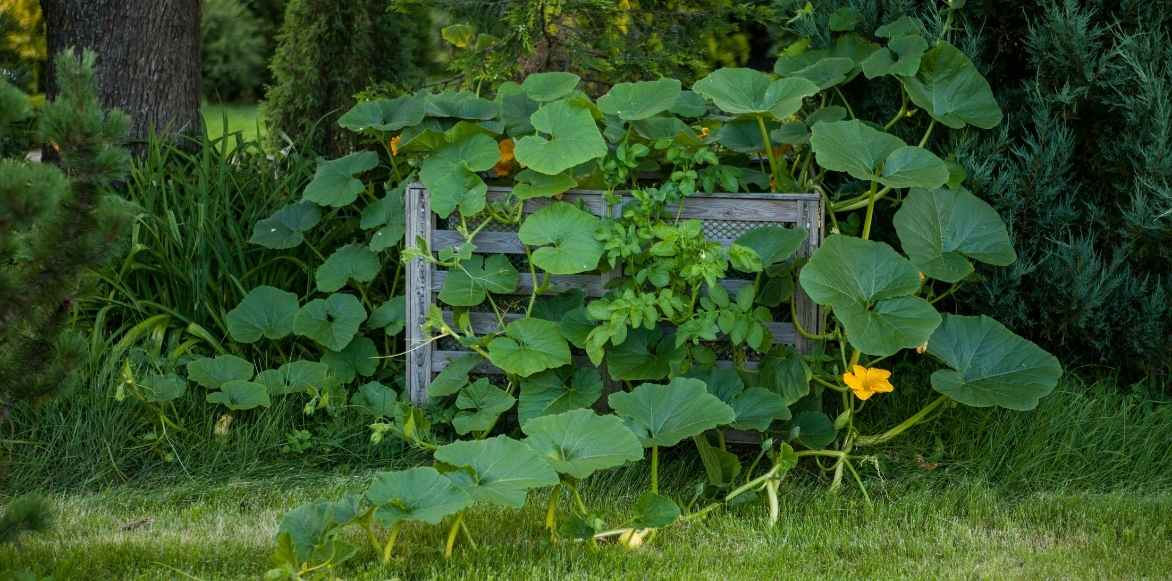
It is not uncommon to see pumpkins growing on the compost heap!
Harvest and storage
Harvest
Harvesting should not be anticipated: pumpkins are harvested at full ripeness as late as possible, but before the first frosts. They are ripe when the neck becomes dry and light yellow, and the foliage is withered. The earliest varieties can be harvested as early as September. The colour of the skin is also a good indicator; for example, at ripeness, it takes on its characteristic orange hue in most cases. Harvest them with the neck, cut close to the stems. In many regions, the flowers are harvested to be consumed stuffed or in fritters, similar to courgette flowers.
Storage
Pumpkins can be stored for several months in a cool room at 10-15°C and can be consumed throughout the winter. Once stored, regularly check that the fruits are not rotting, and remove any diseased squashes. They can also be stored cut into pieces and then frozen, or more simply wrapped in cling film for a few days in the refrigerator.
Uses and nutritional benefits
Pumpkin is consumed cooked in savoury or sweet dishes. It lends itself to multiple recipes, particularly being prepared as a gratin, purée, creams, tarts, soups, and velvety dishes, and even as jams. It pairs well with couscous. A delicious pumpkin curry can be made from it.
Low in calories (26kcal/100 g), it is, however, very rich in vitamins, particularly provitamin A, trace elements, potassium, and has antioxidant properties.
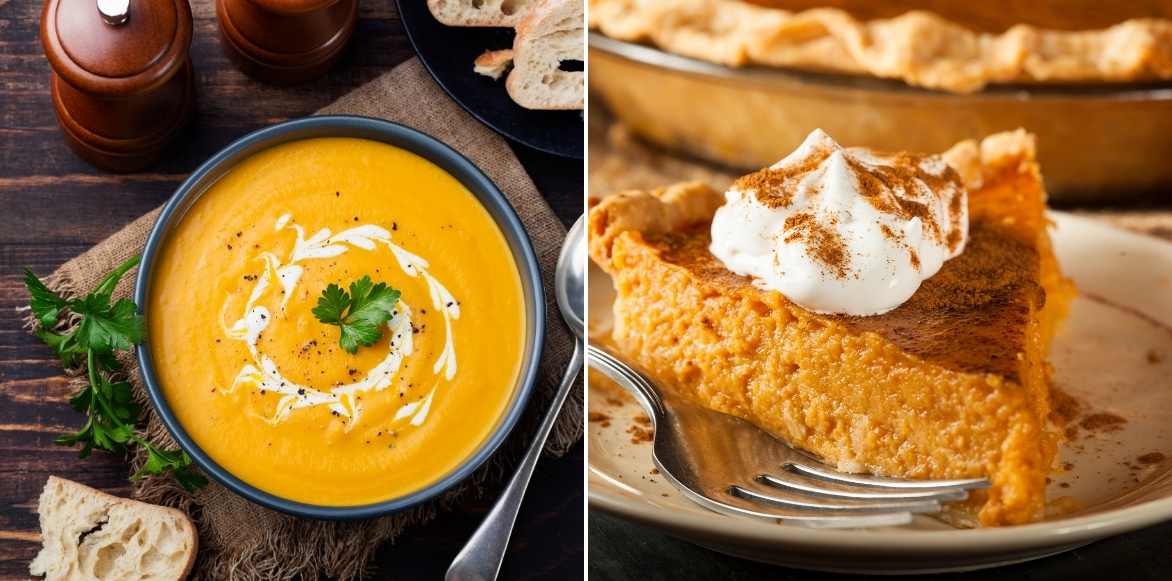
Whether sweet or savoury, pumpkin is delicious
Useful resources
- Find our numerous varieties in our ranges of squashes and pumpkins.
- Discover our article on Pumpkin: harvest and storage
- Check out Ingrid’s tips in this article on sowing and growing squashes and courgettes and discover her favourite varieties!
- Explore our buying guide for squashes
- Our tutorial: Make a lantern with a pumpkin for Halloween
Frequently asked questions
-
Why are my pumpkins rotting on the vine?
A pumpkin in direct contact with soil that retains too much moisture can rot on the vine. During rainy periods, we recommend placing a tile or a brick, for example, between the ground and the fruit to isolate it and limit premature rotting.
- Subscribe!
- Contents






























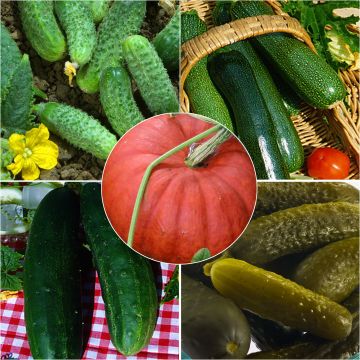
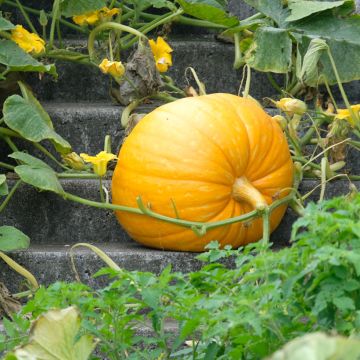
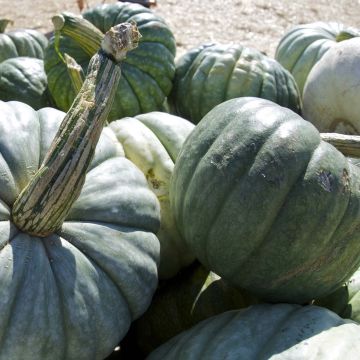
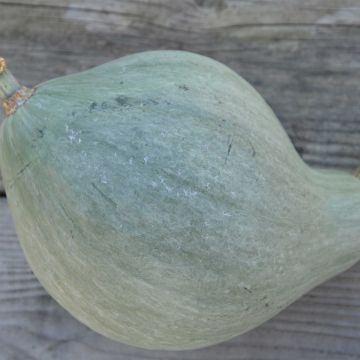
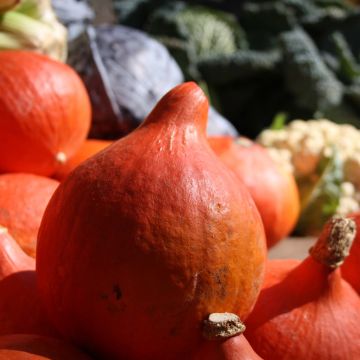
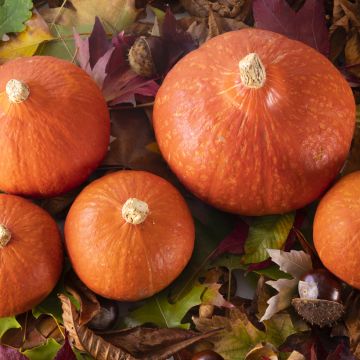
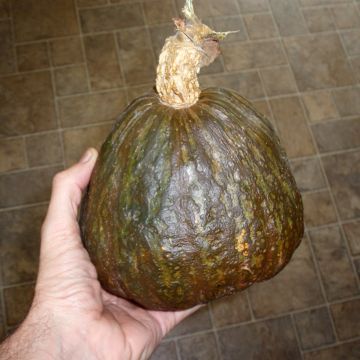
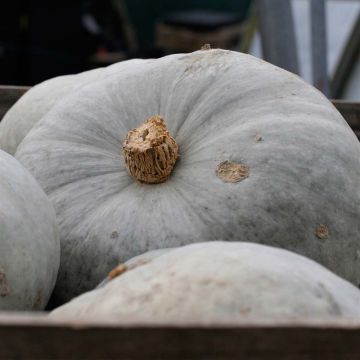
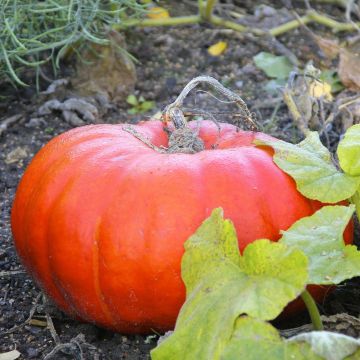

Comments